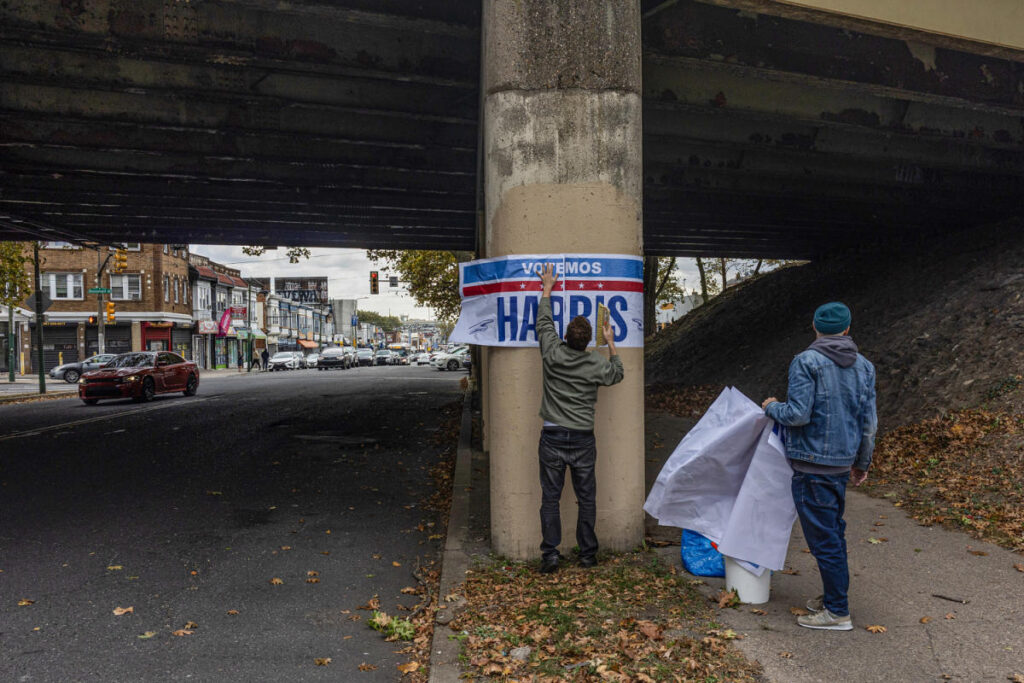In Wayne, Pennsylvania, the post-2016 election environment ignited a fervent resolve in Brooke Rusenko. She reflects on the sense of defeat she felt upon waking to Donald Trump’s victory, vowing to take action in future elections. This commitment led her to volunteer for Kamala Harris in the suburban counties surrounding Philadelphia, joining a mélange of dedicated volunteers from various locations, including those who traveled from abroad. They are doing everything from door-to-door canvassing to phone banking, all driven by a desire to alter the electoral landscape after feeling the weight of letting a Trump win go unchallenged. The collective effort is palpable, with many sharing similar sentiments of determination and urgency in their desire to foster change.
The ground operation for Harris’s campaign in Pennsylvania is described as comprehensive and ambitious, far surpassing the resources that Trump’s campaign seems to have at its disposal. With a network of 50 offices across the state, Harris’s team employs over 450 paid staff and boasts thousands of volunteers. Brendan McPhillips, campaign advisor for Harris, emphasizes the scale of their outreach effort, noting that they are knocking on doors at unparalleled rates. The strategy not only involves contacting likely Democratic voters but also focuses on disillusioned Republicans, particularly those who previously supported candidates like Nikki Haley. This dual approach aims to cultivate a coalition that could tip the votes in a closely contested race, a concept referred to as “shock and awe.”
Key to the Harris campaign’s strategy is identifying voters influenced by Haley’s campaign in the Republican primary, which presents a significant opportunity in the suburbs of Philadelphia. Approximately 42,000 voters chose Haley over Trump, and the campaign aims to convert them into allies. State Senator Maria Collett recognizes the potential of these voters, believing many are persuadable and can be swayed to support Harris. To bolster these efforts, the campaign has enlisted voices from within the Republican Party, including anti-Trump figures such as Jim Greenwood and Liz Cheney, to reach out to Republican voters willing to entertain the idea of voting for a Democrat.
As both candidates ramp up their campaigning efforts, the intense focus on Pennsylvania’s suburbs draws attention to a broader narrative about the ever-evolving political dynamics of the state. Democratic strategists express confidence that Harris can perform well among voters in these regions, particularly because of the growth in ticket-splitting among voters. However, challenges persist. While the Democrats seek to enhance turnout in traditionally supportive areas such as Philadelphia, local leaders express concerns regarding the organization and funding of voter mobilization efforts. Notably, the Philadelphia Democratic Party seeks to ensure adequate resources to maintain their campaign infrastructure, highlighting inherent tensions within party operations as Election Day approaches.
In the suburbs, the atmosphere is thick with anticipation, dread, and unrest as the campaign nears its conclusion. A palpable sense of urgency prevails among volunteers who report encountering a mix of enthusiasm from supporters and fatigue from voters keen for the election to end. Notable incidents, including the vandalism of campaign signs, add to the tension. Complaints regarding intimidation at ballot drop locations and a surge in challenges to mail-in ballot requests demonstrate the rising stakes of the electoral process. Local election officials brace for election-day disputes, amid widespread community discussions about how the outcome will critically shape Pennsylvania’s political landscape.
Ultimately, both parties are preparing for a tightly contested electoral battle, each relying on their unique campaign strategies. While Harris’s campaign emphasizes a grassroots approach through extensive door-knocking and volunteer engagement, Trump’s campaign prioritizes building emotional connections with dedicated supporters. The dynamic among voters, specifically contrasting registration trends, indicates a nuanced electoral map that could reflect both party strengths and weaknesses. As the campaigns unfold in Pennsylvania, the increasing activity on the ground suggests a charged atmosphere leading up to an election that many observers believe could hinge on the actions taken in the weeks leading up to November 5. Amidst their respective efforts, volunteers like Rusenko find revitalization in their collective actions, sharing drives fueled by hope and unease, as they dive headfirst into mobilizing voters and instigating change.

